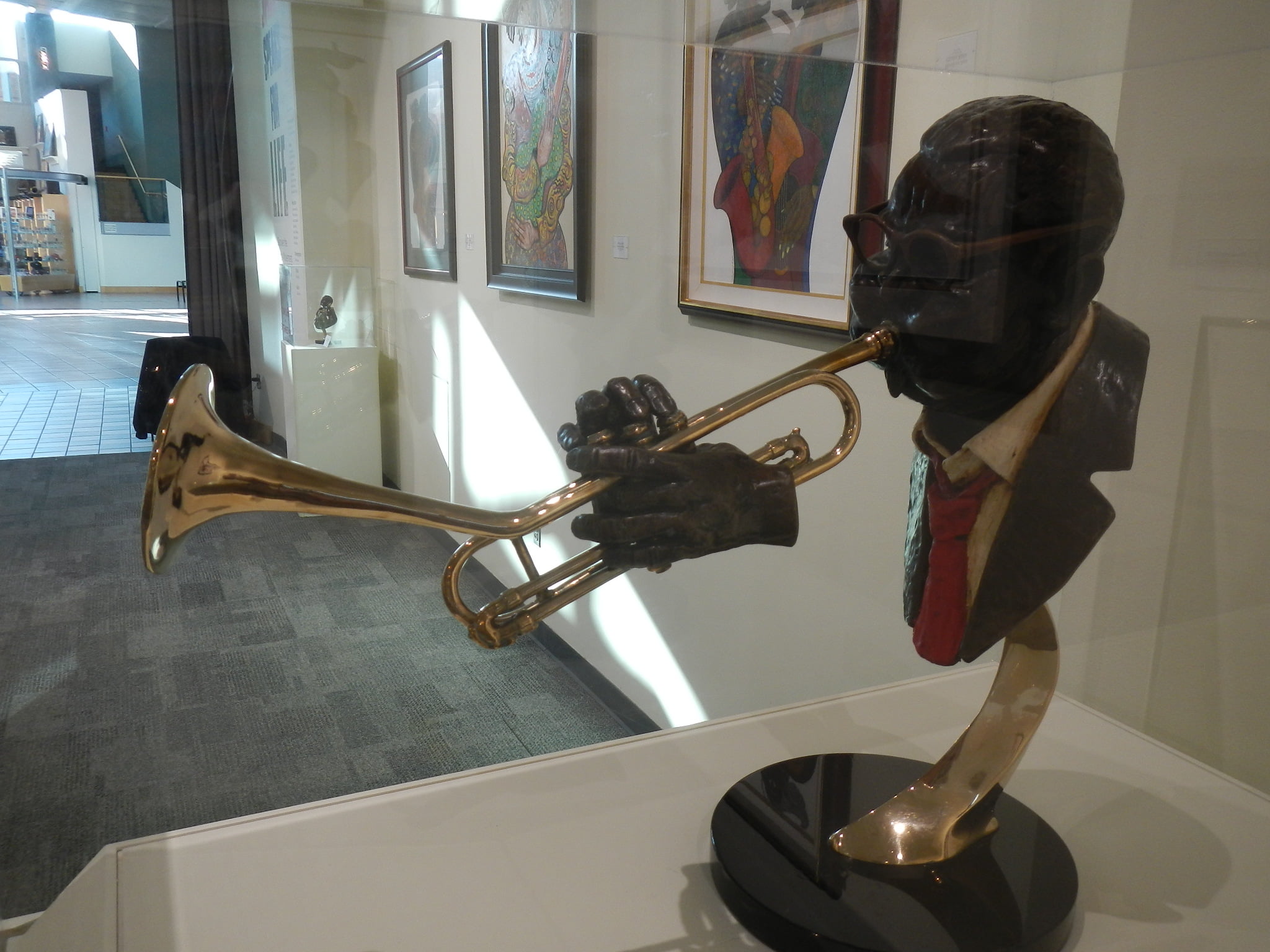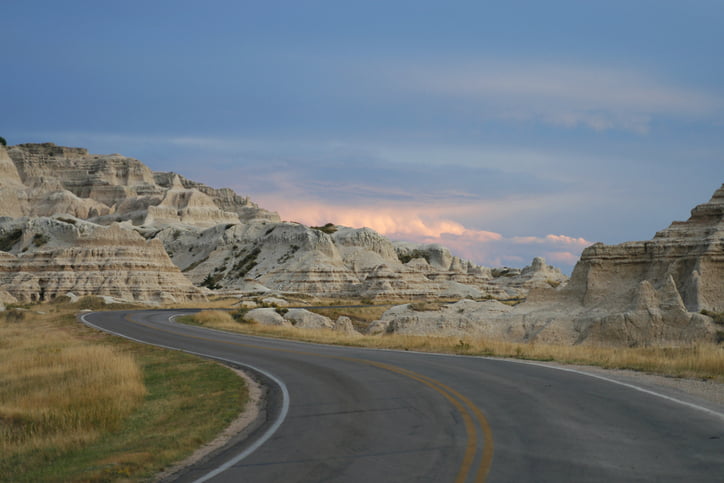Music is often described as the universal language bringing us all together. The stories of music history, genres, and instruments are told at music museums and studio tours across North America. Pop in a CD or cue up your MP3 files and dive deep into some of these showcases of music across Canada and the United States.
Rock ‘N Roll
The Museum at Bethel Woods (Bethel, NY) is located at the site of the three-day, 1969 Woodstock festival. Exhibits include 20 films, five interactive productions, 164 artifacts, hundreds of photographic murals, and dozens of interpretive text panels. New in 2021 are guided tours and an Augmented Reality Tour using a rented iPad to see 360-degree visuals and stories from the perspective of the festival audience.
The Big House (Macon, GA) – The massive English Tudor-style home where the Allman Brothers Band lived and flourished from 1970 to 1973 has been turned into a fan-favourite music museum. The ABB operated as an extended family, and the house provided a place for that family – including roadies – to live, rehearse, write, and record the band’s distinctive Southern rock. It’s overflowing with memorabilia curated to draw visitors through various stages of the band’s evolution, including artifacts, photographs, and instruments. Locals joke there must be something in the water: Macon has produced powerhouse musicians including Little Richard, Otis Redding, and the Allman Brothers.
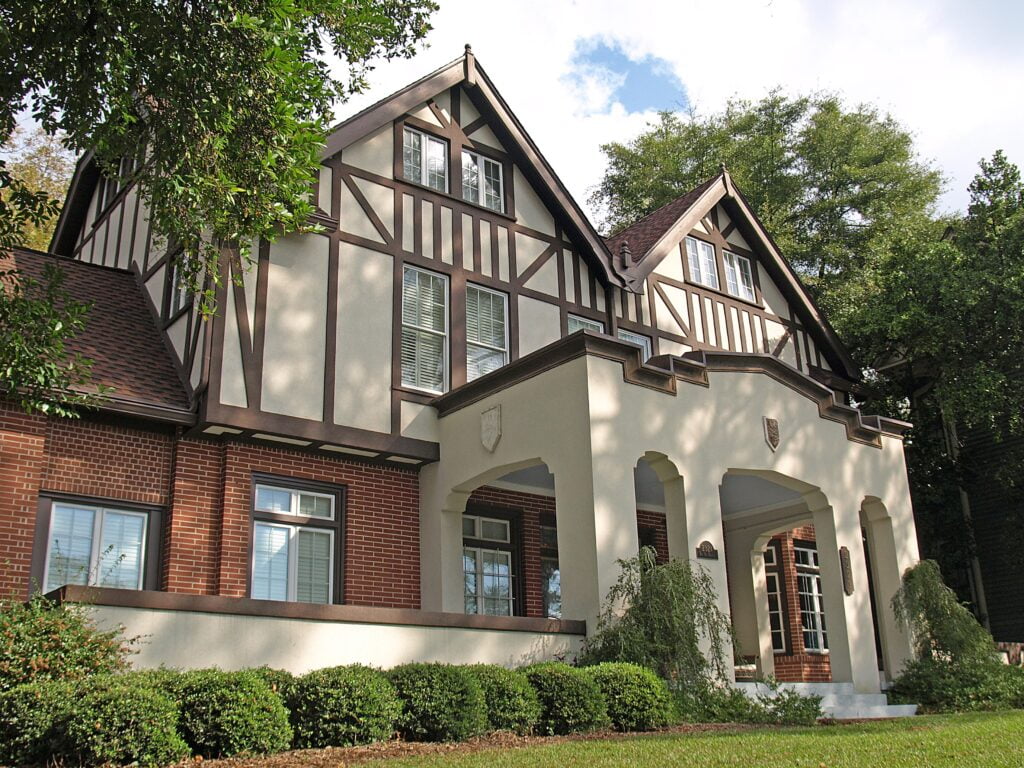
Exterior of The Big House in Macon, Georgia – the museum dedicated to the Allman Brothers Band.
Historic Sun Studio (Memphis, TN) marks the birthplace of rock and roll by legendary producer Sam Phillips. Among the names associated with this modest recording studio are Ike Turner, Jerry Lee “The Killer” Lewis, Roy Orbison, Carl “Blue Suede Shoes” Perkins, Johnny Cash, and Elvis Presley. On the tour, look for the “X” on the studio floor – according to popular legend, Bob Dylan fell to his knees and kissed the mark where Elvis launched the history of modern music with “That’s All Right.” The jump blues song launched young Elvis onto popular radio. The switchboard at local station WHBQ lit up on the night “That’s All Right” had its first radio airing, getting a total of 14 plays that day.
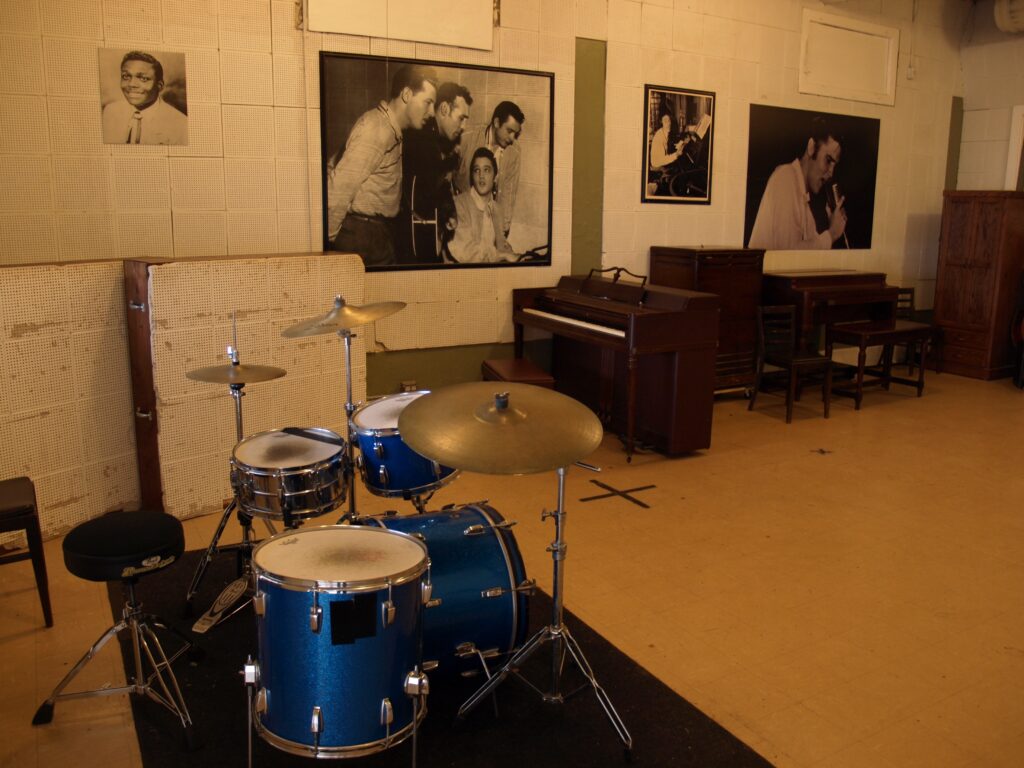
The famous recording studio at Sun Studio in Memphis was where the Million Dollar Quartet made recordings … among many others.
The Elvis Presley Birthplace (Tupelo, MS) includes the two-room, shotgun style house where Elvis was born during the Great Depression, the family’s Pentecostal church, and a state-of-the-art music museum filled with photographs, old 78s, sheet music, and audio-visual clips. Set on its original site, his boyhood home has been restored to circa-1935, the year Presley was born. The humble, wood-framed church at the centre of the Presley family social world was where young Elvis learned to sing, play guitar, and acquired his passion for gospel music. For a young boy who was fascinated with all music styles, it’s easy to see how the spirit-infused tunes of the church were a driving force behind his career.
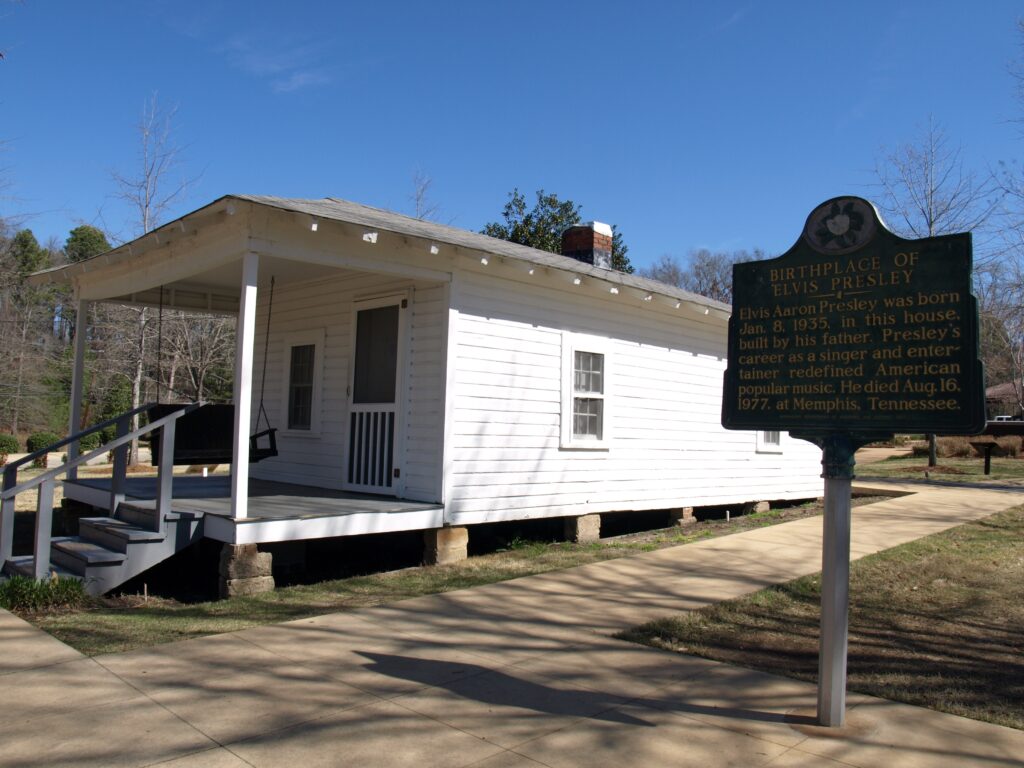
The Elvis Presley Birthplace in Tupelo, MS even includes the small, shotgun-style house where Presley was born. The home sits on its original location.
The Rock & Roll Hall of Fame (Cleveland, OH) is a world-class music museum that aims to educate visitors about the history and continuing significance of rock and roll music, a genre that emerged in North America in the early 1950s. Pioneering musicians included Chuck Berry, Elvis, and Buddy Holly – eventually the music they made came to be known as rock and roll. A large collection of iconic rock and roll artifacts as well as special exhibits explore the early influencers, present day, and future of the music.
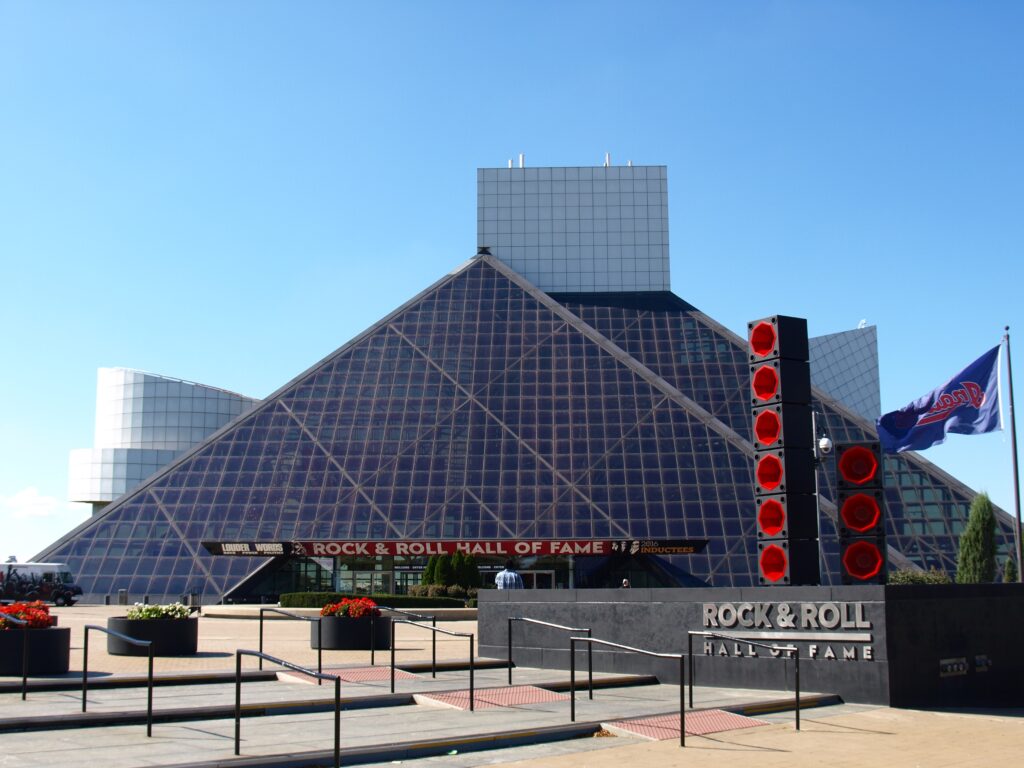
Exterior shot of the Rock & Roll Hall of Fame in Cleveland, Ohio.
Motown
The Motown Museum (Detroit, MI) explores the music that came out of Hitsville U.S.A., including the tunes of Diana Ross & the Supremes, Smokey Robinson, Stevie Wonder, the Temptations, the Four Tops, Marvin Gaye, Michael Jackson & the Jackson 5, and Lionel Richie. Highlights include Stevie Wonder’s harmonica, the Studio A control room, and standing in the infamous Snake Pit, the recording space used by Motown greats. Plans are underway for a major expansion.
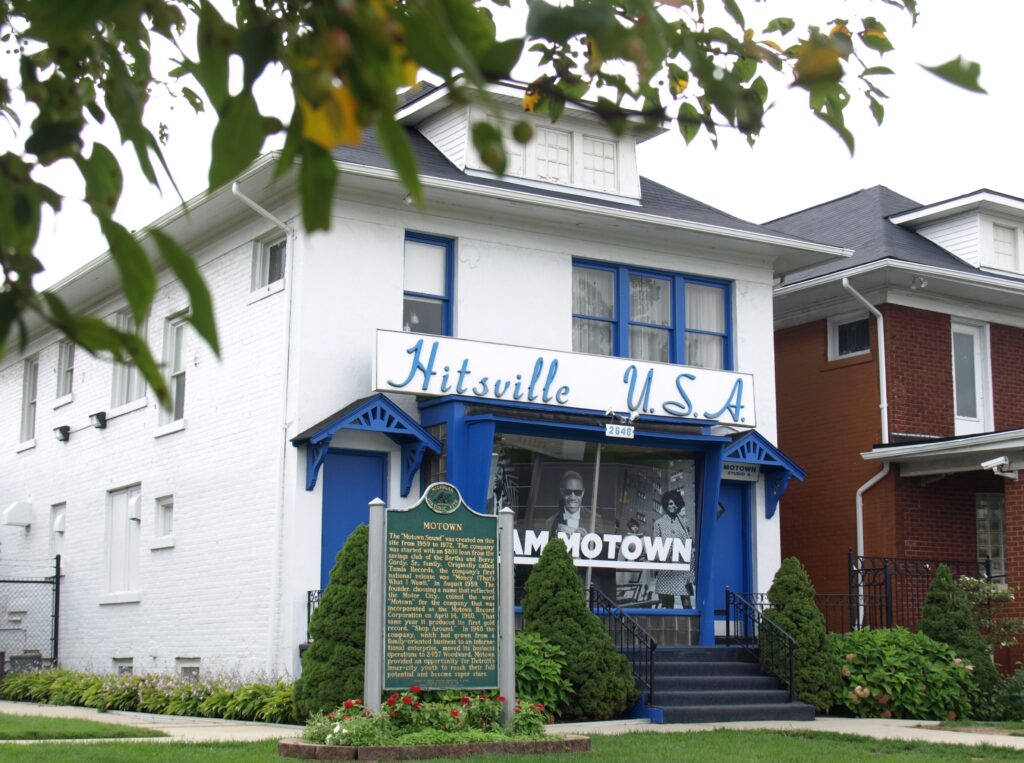
Exterior of Hitsville USA, the Detroit museum dedicated to the music of Motown.
Jazz
The New Orleans Jazz Museum (New Orleans, LA) is located in the Old U.S. Mint just steps away from the French Quarter. This music museum is a celebration of jazz, in the heart of the city where it was born and nurtured. Rotating interactive exhibits and more than 25,000 artifacts tell the history and culture of the American jazz artform. There are listening stations, films, instruments, a recording studio, and a dance floor, designed to engage visitors in an active way.
The American Jazz Museum (Kansas City, MO) is in the city’s Historic 18th & Vine Jazz District, and is filled with instruments, films, and artifacts telling the story of jazz’s impact in Kansas City, the United States, and across the world. Permanent exhibits are interactive with listening stations, touchscreens, and custom mixing boards. Highlights in the collection include Charlie Parker’s Grafton plastic alto saxophone, and a sequined gown worn by jazz great Ella Fitzgerald.
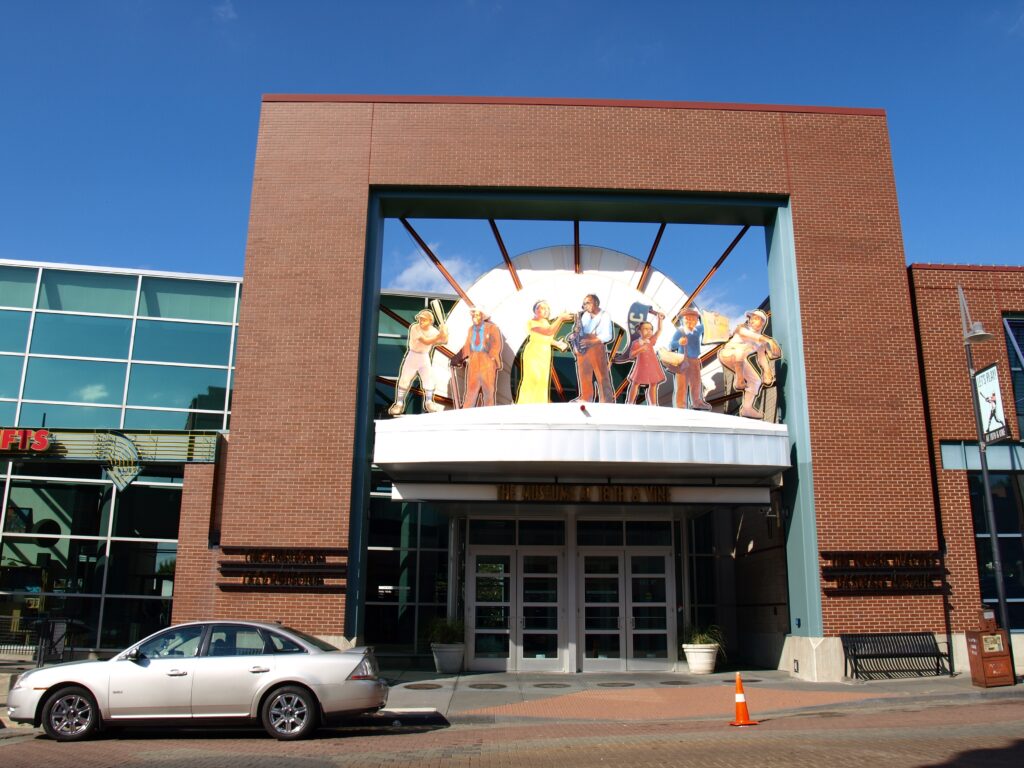
The American Jazz Museum in Kansas City, Missouri.
Studio Tours
Historic RCA Studio B (Nashville, TN) has its mark in history as the “cradle of the Nashville Sound.” Built in 1957 – after which it hosted recording artists like Elvis Presley, Willie Nelson, and Dolly Parton – the studio has been restored back to its 1970s prime. Unique for its sophisticated background vocals and use of strings, the Nashville Sound helped revive the popularity of country music. Visitors can join tours of the historic studio.
Muscle Shoals Sound Studio (Sheffield, AL). Nicknamed 3614 Jackson Highway (made famous by a Cher album cover of the same name), Muscle Shoals Sound Studio was owned and operated by its own funky-sounding session musicians known as the Swampers, who played on thousands of memorable songs by musicians including Paul Simon, Bob Dylan, Aretha Franklin, Willie Nelson, and Elton John. The tour takes visitors through the studio and lobby space restored to its 1969 vintage. Walls are covered with framed gold records and awards; the Yamaha baby grand piano is the original used by Paul Simon to record “Kodachrome”; and the vocal booths are the ones used by powerhouse singers like Linda Ronstadt.

Muscle Shoals Sound Studio – in the Muscle Shoals region of Alabama – is also nicknamed 3614 Jackson Highway. The recording studio was once home to the Swampers, the MSSS rhythm section, and is open for tours. Cher even titled her album recorded there as 3614 Jackson Highway.
FAME Recording Studios (Muscle Shoals, AL) – where the famous “Muscle Shoals sound” originally found its groove – would become one of the most sought-after recording locations in the world. Percy Sledge’s 1966 hit “When A Man Loves A Woman” rocketed to the top of the charts and planted The Shoals on the musical map. In 1967 a recording session at FAME launched the mainstream career of a young Aretha Franklin. Over the decades, FAME has turned out thousands of recordings, from soul and funky rhythm and blues, to rock and roll and country. Studio furnishings are close-to original era, and the wood-panelled walls are lined with photos of musical artists who rehearsed and recorded there. FAME still operates as a working studio but is open at specific times for tours, taking visitors through the rooms that turned out hits by Etta James, Aretha Franklin, Wilson Pickett, and Otis Redding.
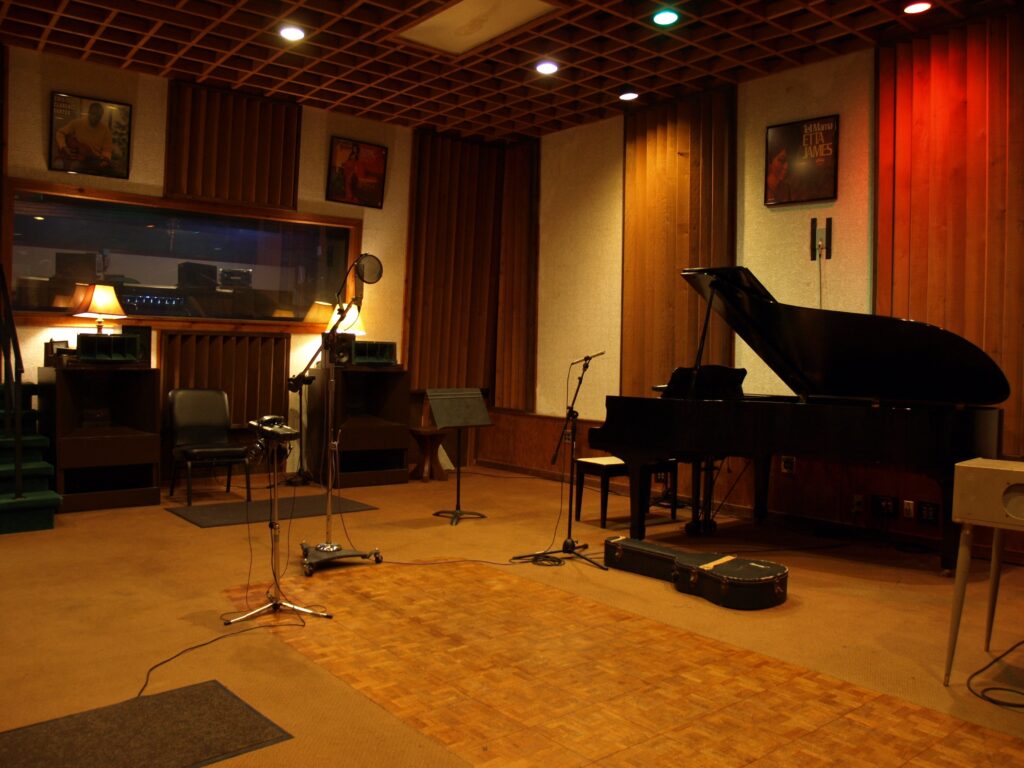
Inside the working recording studio at FAME in Muscle Shoals, AL. Musical giants like Aretha Franklin recorded in this studio.
Other “Don’t Miss” Museums
Studio Bell (Calgary, AB) – part of the National Music Centre – tells the stories of music history and technology in Canada, spanning more than four centuries with a collection of 2,000+ pieces. This music museum is made up of 22 exhibition spaces with interactive ways to hear and experience Canadian music history. Visiting musicians will love the Living Collection, made up of functional historic instruments, studio setups, and recording equipment, including the Rolling Stones Mobile Studio (RSM), the first professional mobile recording studio, and a classic British Helios recording console. The RSM was used by musicians like Neil Young, Fleetwood Mac, Bob Marley, and Led Zeppelin.
The massive Musical Instrument Museum (Phoenix, AZ) contains an incredible collection of musical instruments from all over the globe. Both percussion and stringed instruments are on display, with videos showing how they are used in different parts of the world. Programmed headphones activate as you approach the individual displays in the Geographic Gallery, organized by continent and country. Genres of music – jazz, blues, folk, rock and roll – each have their own displays showing the instruments used and the influences on the music style. New in November 2021, a gallery of 80 instruments, Treasures: Legendary Musical Instruments, celebrates some of the world’s most notable musical moments, performance traditions, and instrument developments.
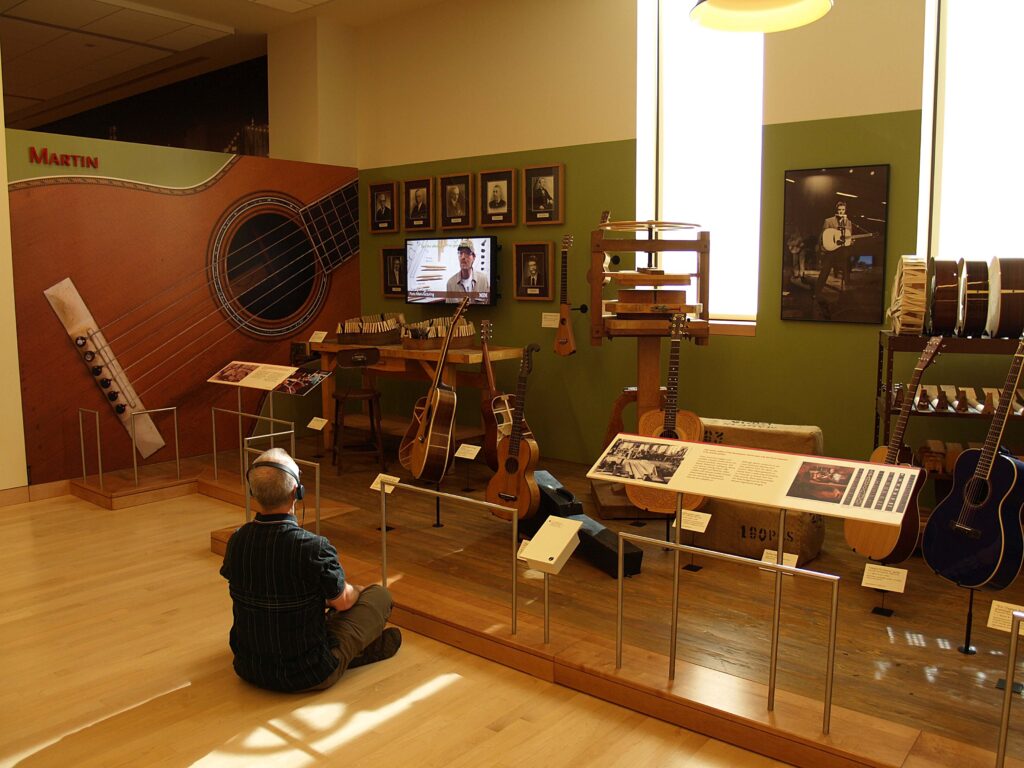
The Martin Guitar display inside the Musical Instrument Museum in Phoenix, AZ.
National Music Museum (Vermillion, SD) Who knew that South Dakota would be home to a massive collection of instruments – including many one-off pieces? In the process of reopening after a major expansion and renovation, the National Music Museum boasts numerous instruments from musical icons like Bob Dylan, Elvis Presley, and Johnny Cash. The displays show how instrument makers consistently push the limits of their craft to perfect, innovate, improve, and modify their designs. Twelve new galleries will showcase musical instruments as seen, used, heard, and explored by peoples across cultures, continents, civilizations, and eras.
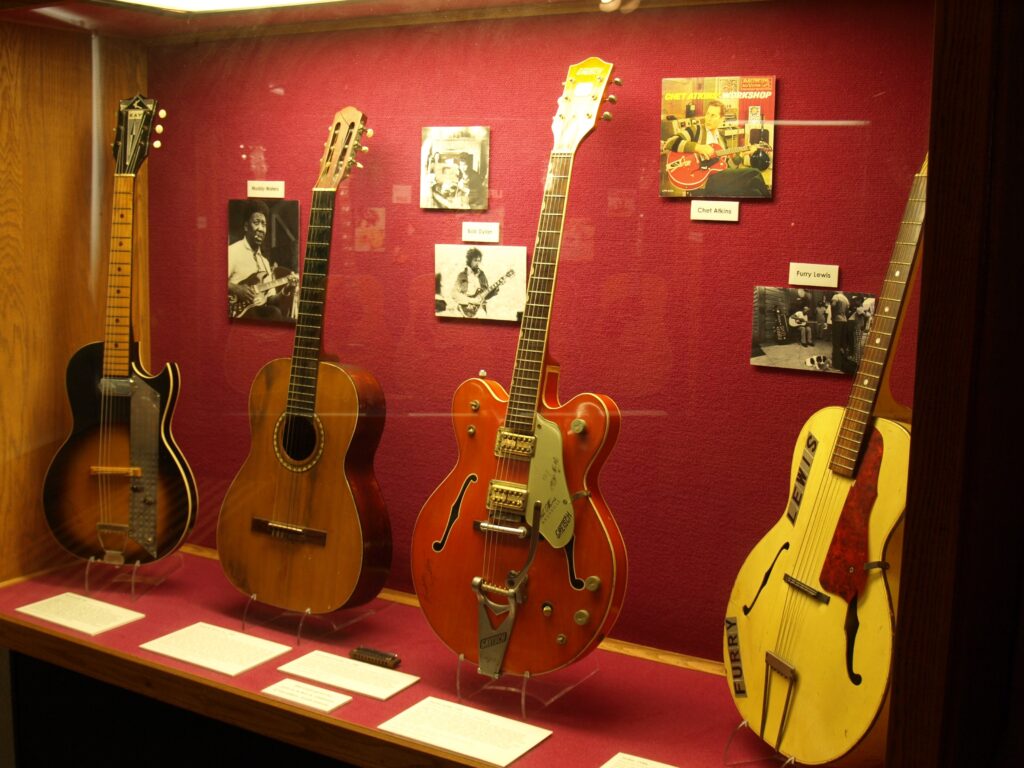
Display of guitars inside the National Music Museum in Vermillion, South Dakota.
The Memphis Rock ’n’ Soul Museum (Memphis, TN) uses film and displays to show the roots and emergence of roots blues music. Headsets guide visitors through archive-stuffed galleries, illustrating how blues, country, and gospel mixed together and how the appeal of this music crossed the colour line. Displays include the portable reel-to-reel recorder and mixing board used by Sam Phillips to capture the strains of the blues on his road trips, the original typed lyrics for “Heartbreak Hotel,” the Gibson hollow-body “Lucille” guitar favoured by B. B. King, and Ike Turner’s first piano.
The Alabama Music Hall of Fame (Tuscumbia, AL) pays tribute to the state’s great musicians, including W. C. Handy, Hank Williams, Lionel Richie, Martha Reeves, Wilson Pickett, Percy Sledge, Nat King Cole, Emmylou Harris, and Jimmie Rodgers. In addition to the Hall of Fame portraits there’s an archive-stuffed exhibit including instruments, posters, original sheet music, stage costumes, and a trumpet belonging to W. C. Handy, a working recording studio, and the Southern Star tour bus belonging to the super group, Alabama. Plan at least an hour for the self-guided tour.
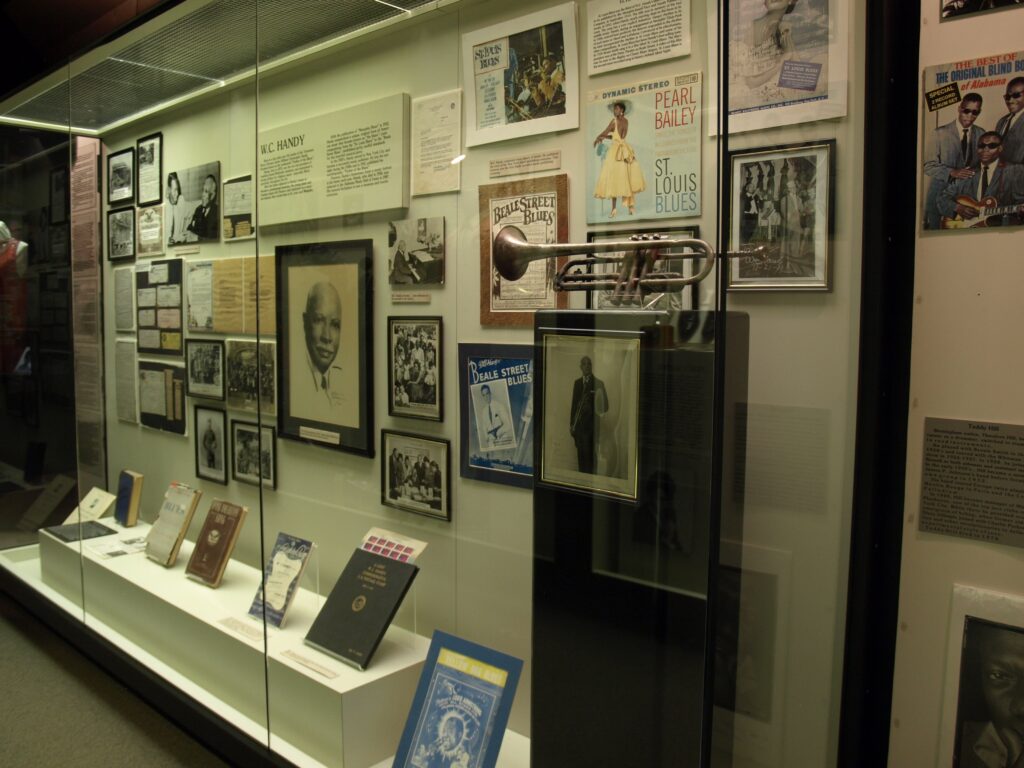
The Alabama Music Hall of Fame in the Muscle Shoals region of Alabama pays special recognition to the music of W. C. Handy, the self-anointed Father of the Blues. Handy was born in a small log cabin nearby.
Mississippi Grammy Museum (Cleveland, MS) celebrates the forms of music traced back to Mississippi – the self-proclaimed “birthplace of America’s music” – from country to blues to soul to rock and roll. The highlight of the facility is the Mississippi Gallery, a large section recognizing the musicians and songs birthed in Mississippi. The expansive, luminous Mississippi Music Table is an enormous interactive display that joins the threads of the state’s music history. Half the music museum’s exhibits are interactive, like the Mississippi Music Bar’s playlist of Grammy winning songs. The glass cases in the Mississippi Legends section display keepers like Willie Dixon’s passport, Roebuck “Pop” Staples’ Fender Jazzmaster guitar, and a white jumpsuit with snazzy blue trim that once took Elvis’s female fans to the brink of crazy.
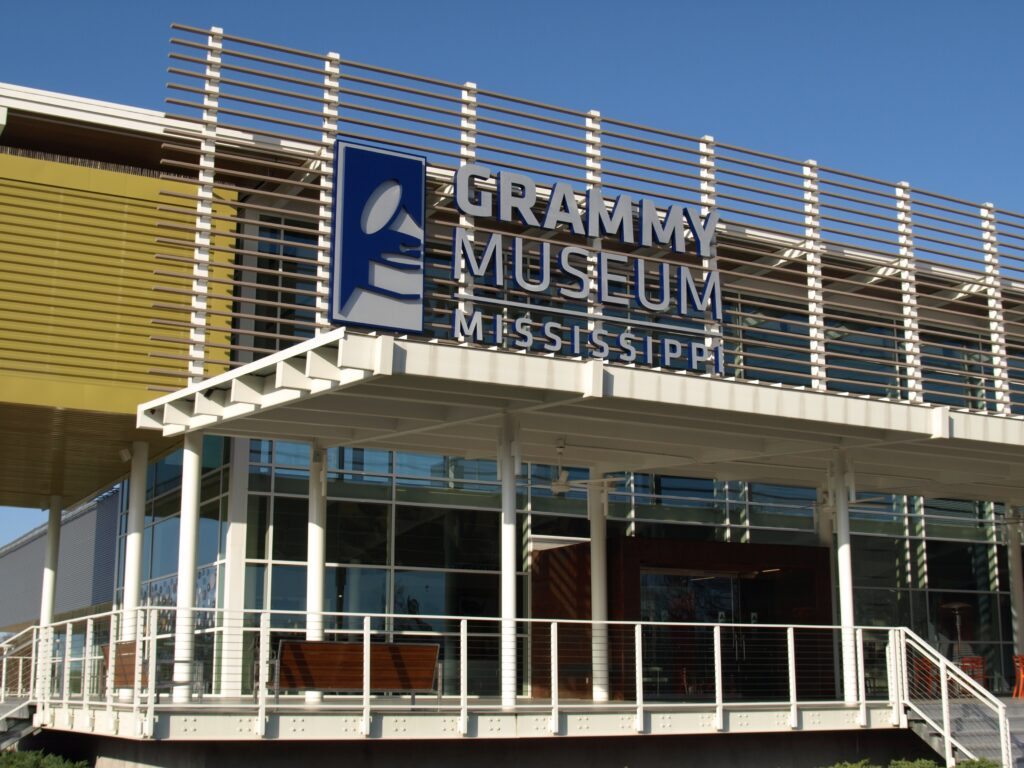
The Grammy Museum Mississippi is home to hundreds of exhibits celebrating the music that came from the state nicknamed “The Birthplace of American Music.”
As part of your trip planning, check online for current COVID-19 protocols and restrictions. A few museums are closed until early 2022, and some others are operating with reduced hours.

